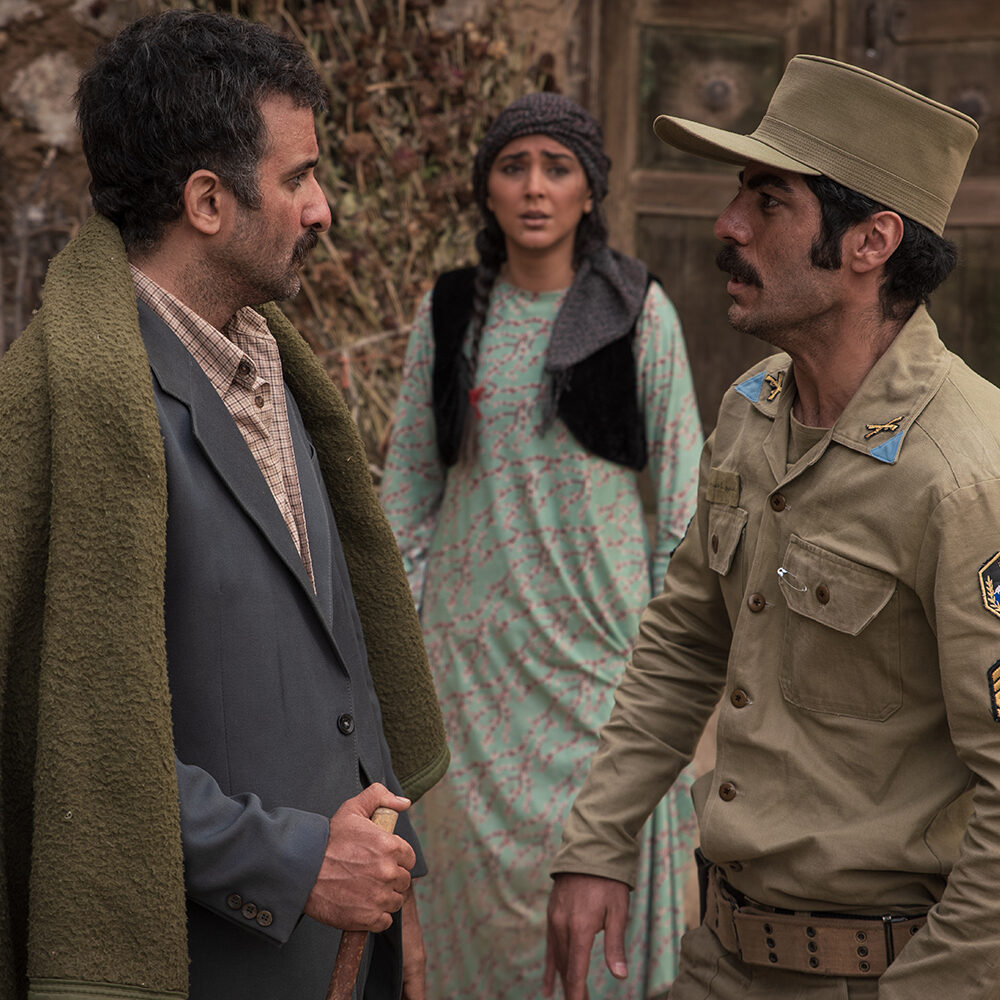NEWS

‘Zalava’ Review: Spooky but Slight Iranian Revolution Possession Movie Bottles Up Terror
Fantastic Fest: An ambiguous threat stalks a 1978 Iranian community where the scariest thing is an invisible force kept in a jar.
The scariest part about writer/director Arsalan Amiri’s Iranian Revolution horror movie “Zalava” is an invisible, potentially demonic force housed inside a glass jar. Whether or not what’s in there is actually a demon or not remains ambiguous in the film’s economic screenplay, nor does it really matter. The real harbinger of doom here is the violent aura of persecution plaguing the small, eponymous village nestled in the mountains of Kurdistan, and the real curse is the paranoia of one’s own neighbor raining down fire on the community. While this 1978-set horror movie isn’t exactly scary, it’s not without a dread atmosphere set off by a shaman who claims he has a solution to the townsfolk’s fears.
The movie kicks off with a series of title cards to settle us into the time and place: “1978. Before the revolution. A century ago, a band of gypsies traveling from east to west settled in lava and became acquainted with the customs and rituals of the people of this region. But a powerful fear has stayed with them over the years.” What follows next is a striking opening sequence wherein a woman, apparently possessed, falls backward off a ledge to her death, the townspeople gathered in horror.
A bustling rage is astir in the village as a stoic — and also handsome and mustachioed — Gendarmerie sergeant named Masoud (an appropriately cold Navid Pourfaraj) descends upon the town to confiscate its weapons, in an apparent attempt to curb amateur attempted exorcisms from taking place. Specifically, locals, cursed with this long-held fear that a demon is secretly festering among them, are bloodletting one another using their rifles, which makes for a number of bloody discomfiting scenes where locals are mortally wounded by each other.
This only incenses the locals further, while also shaking out resident shaman Amardan (Pouria Rahimi Sam), who through some spooky witchcraft of his own thinks he can solve the town’s problems. Between the shaman and sergeant, they hope to ameliorate the bad vibes in the town and stop a potential breakout of all-out mob mania, as townsfolk start to point fingers at one another and suspect each other for being sick. See the Covid parallels? While likely not explicitly Amiri’s goal, the paranoid currents floating in the town certainly resemble the way we all felt in the middle of 2020: struck dumb by terror and confusion. (Amiri has stated the film is meant to put a genre spin on his own memories growing up Iranian-Kurdish.) That also makes the film prescient for an Iran wracked by the Covid crisis, including Supreme Leader Ali Khamenei’s only recently lifted ban on American-made vaccines.
But back in Zalava, meanwhile, as the resident voice of reason, local physician Maliheh (Hoda Zeinolabedin) is collecting blood samples to assess rising adrenaline levels. Her scientific findings fall on deaf, disinterested ears, except perhaps for those of Masoud, who holds an obvious attraction for her. This yields a tender, vigil-like moment wherein he tells her he was born an orphan with an extra finger, and that anyone who tried to adopt him saw this deformity as a mark of the devil. Pourfaraj’s performance is moving here, but this is, to the movie’s downfall, about the only moment in which we can see behind the curtain of his placid, walled-up exterior.
Though the movie does have its moments of people coming unhinged, no question. The atmosphere of hysteria pervading the movie mirrors its setting at the beginning of the 1978 Iranian Revolution. Every moment in the movie is just at the point of boiling over, but never quite does. The movie is handsomely, adequately shot, but a morose, insistent score and mostly ambivalent cinematography keep “Zalava” from being the kind of experience that fully immerses you into the terror. The movie’s scares remain, mostly, as bottled up as the film’s central demon, whose mysterious identity is never solved. While the movie barrels toward some tense face-offs between the townsfolk, and more than a few convulsing moments of possessed (maybe?) hysteria, “Zalava” never quite takes off as a terrifying genre piece, even if Amiri’s attempt to exorcise his own demons is admirable.
“Zalava” premiered at the Venice and Toronto international film festivals before heading onto Fantastic Fest. It is currently seeking U.S. distribution.
As new movies open in theaters during the COVID-19 pandemic, IndieWire will continue to review them whenever possible. We encourage readers to follow the safety precautions provided by CDC and health authorities. Additionally, our coverage will provide alternative viewing options whenever they are available.
